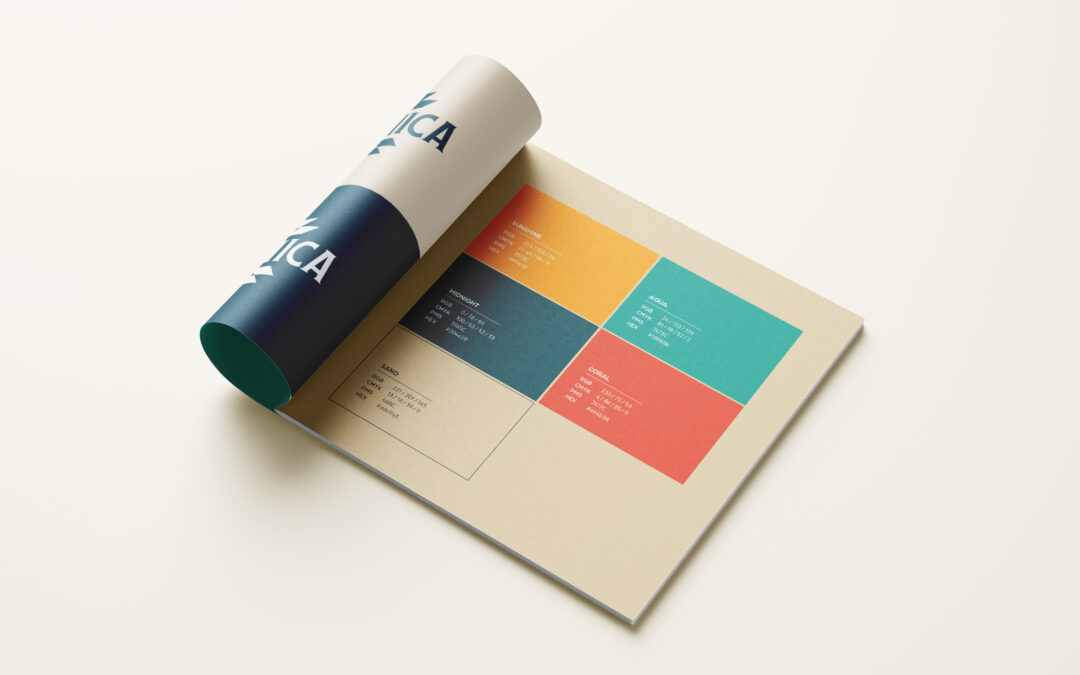Besides the name and logo, there’s another part of your branding that ensures your community is instantly recognizable: your color palette. Certain combinations of colors instantly recall certain brands—while bold primary shades of yellow, red, and blue represent Google, bright red and white are equally synonymous with Coca-Cola. Choosing a distinct combination of colors is a must to help your community amp up your brand recognition and stand out from your competitors.
But all color palettes aren’t created equal. When choosing your colors, be sure to carefully consider a few different factors to land on the perfect hues.
Dos:
- Consider color psychology
- Explore your favorite brands’ palettes
- Evaluate your brand’s personality
- Look for inspiration in unexpected places
Don’ts:
- Copy other brands directly
- Forget about your target audience
- Just choose a single color
- Skip testing your palette
Do:
Consider Color Psychology
People naturally associate certain colors with certain feelings or emotions. Red, for example, is often associated with anger or passion. Pink is typically considered a feminine color, while purple is a majestic and royal shade. When choosing your colors, be sure to consider the intrinsic meaning of each hue, and ensure it aligns with your greater brand messaging and objectives.
Don’t:
Copy Other Brands Directly
Having a unique color palette is integral to standing out. While you can seek inspiration from other brands, be sure to put your own unique twist on the shades. Change the saturation, swap out a few of the secondary colors, or use them in different ways to create a distinct visual identity for your brand. The more you can standout from your competitors, the better – so do your own thing with color too!
Do:
Explore Your Favorite Brands’ Palettes
If you’re looking for inspiration, look to your favorite brands and see what they have in common. Are you gravitating towards bright, bold color palettes? Or do you prefer more muted, neutral combos? Evaluating your top picks can help to reveal patterns and preferences you may not be conscious of, giving you a good starting point for creating your own.
Don’t:
Forget About Your Audience
Consider who you’re targeting when choosing your brand colors. If your audience is mostly Boomers, for example, you would maybe want to explore muted, neutral shades and cool tones. If your audience is Gen Z, on the other hand, you’d want to explore more playful, bold, and youthful shades. These small nuances can help your branding resonate better with your audience and make your community feel like a naturally better fit.
Do:
Evaluate Your Brand’s Personality
If your brand is sophisticated and elegant, you want to ensure you choose colors that match. Similarly, if your brand is more fun and playful, you’ll want to pick shades that represent those elements. No matter your brand personality, be sure to mimic your style and vibe with your primary and secondary colors. This will help give your audience context clues about your brand, so they better understand your style from the very beginning.
Don’t:
Just Choose a Single Color
Branding needs more than one color to shine. Choose at least two primary shades, in addition to a selection of neutrals, that you can mix and match to create different marketing collateral. This will help ensure you have dynamic and interesting assets, as opposed to ones that fall a little flat.
Do:
Find Inspiration in Unexpected Places
Colors are all around us, which can make it easier to find your favorite combos. You don’t just have to use photographs and other brand logos as a starting point. Think outside the box and look to natural landscapes, food, flowers, and even fashion trends as a starting point for the individual shades and color combinations you’re drawn to.
Don’t:
Skip Testing Your Palette
While your colors may look good in isolation, it’s important to test them in different places to make sure they make sense tother. Make a few different combinations and a few different cross-channel assets to make sure you like the way everything is working. You should also test the color contrast for accessibility to ensure any text is easy to read.

Putting it All Together
After gathering your inspiration and doing your due diligence, it’s time to put everything together.
- Start by asking senior leadership which colors they love (and which they hate). This will help give you a good jumping-off point for your color palette.
- From there, choose your first must-have shade. This will serve as the primary color in your palette.
- Then, add a complementary color. If you’re not sure which color best complements your pick, look to the color wheel—the shade on the exact opposite side of the wheel is its natural complement.
- Then, play around with the saturation. Choose both a light and dark version of your primary brand color.
- Next, add one or two neutral colors like white, black, gray, or beige. This will help you achieve the dynamic palette you need to execute any type of asset.
- Finally, add an accent color to add an eye-catching pop.
If you’re struggling to find a color palette that feels true to your brand, reach out to the experts. At zipcode creative, we handle every element of branding from logo and name development to brand guidelines and color palettes. We’ll partner with you and your team to create a brand identity that perfectly represents your community. Reach out today to get started!

